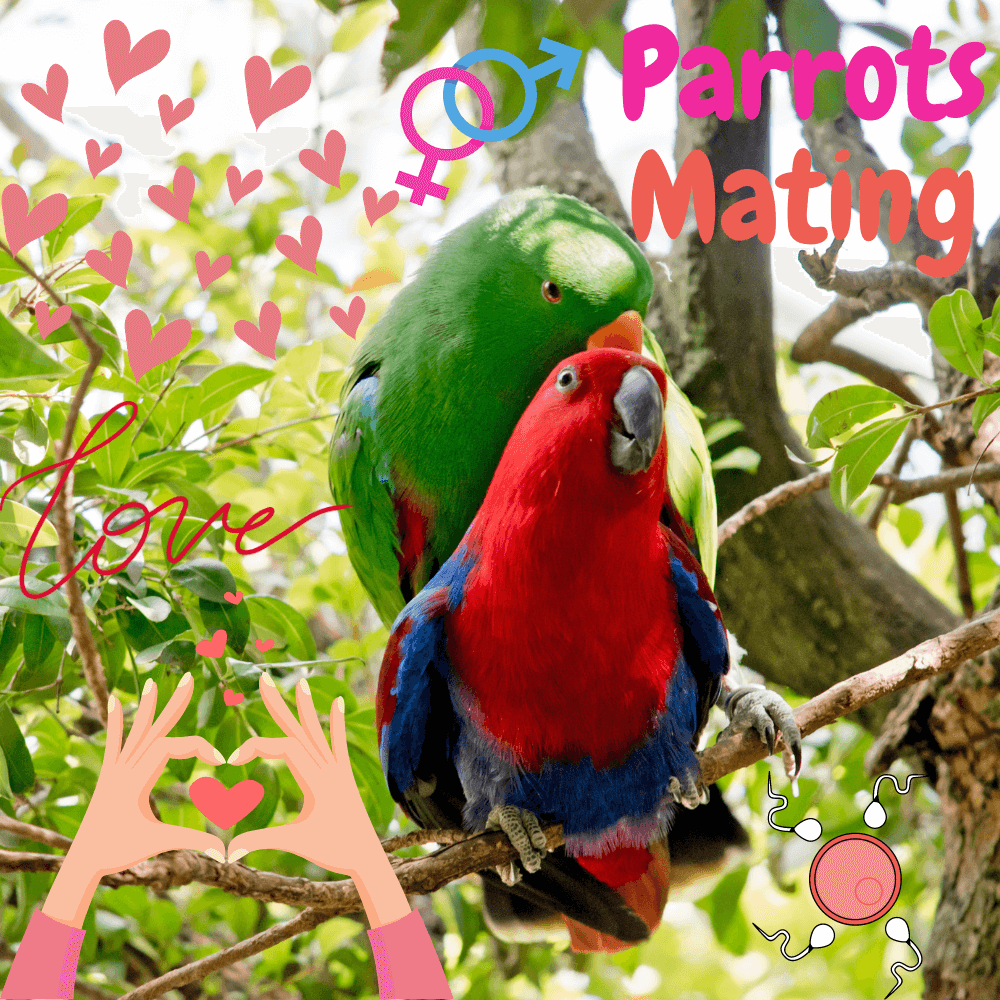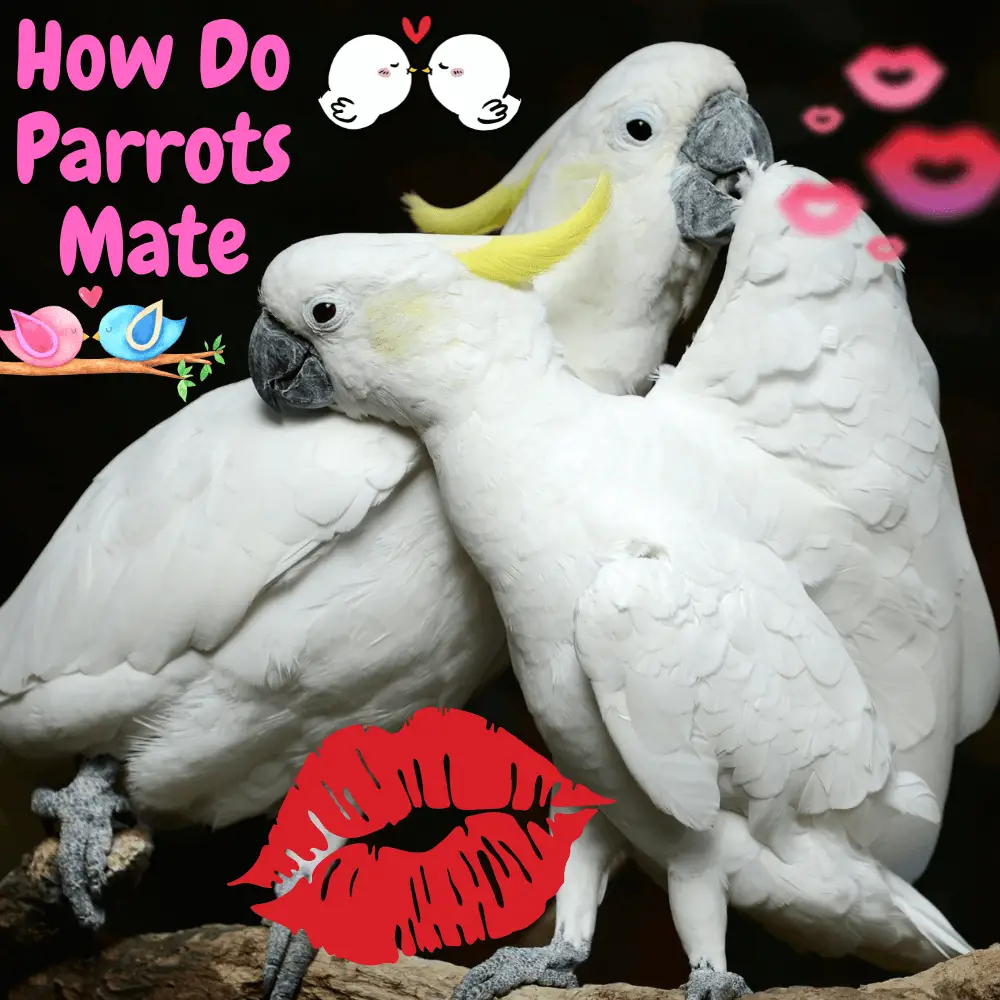
How Do Parrots Reproduce? The reproductive instinct is triggered, for example, in Budgerigars by the abundance of food, combined with longer sunny days (from spring) and the presence of nests (dark cavities). These are relatively common triggers for the majority of parakeet and parrot species.
In the wild, the Budgerigars, spread over a vast area, traveling tens of kilometers per day, undergo long periods of drought, then heavy rains. These, accompanied by long sunny days, promote flourishing vegetation: grasses, cereals, and other plants that grow and mature in profusion. This offers them the guarantee of access to rich and plentiful food. They settle in a place rich in edible plants, water, and egg-laying hollows (cavities in the trunks of trees), which will become their nesting site.
Thus, for our parakeets and parrots, it is their environmental conditions ( space, rich and abundant food, plants, and nest) that favor the instinct of reproduction. This is why we insist on the importance of a rich and free environment, even before considering breeding. As you can see, the environment and the diet must first be appropriate and optimal.
However, if your birds are breeding with you, it does not necessarily mean that they are happy or have an environment suited to their specific needs. Under certain conditions, it can be anxiety-provoking (stressful) environmental factors that trigger the reproductive instinct (for the preservation of the species). This is why it is important to analyze the quality of the environment that you offer your birds.
Parrots Reproduce
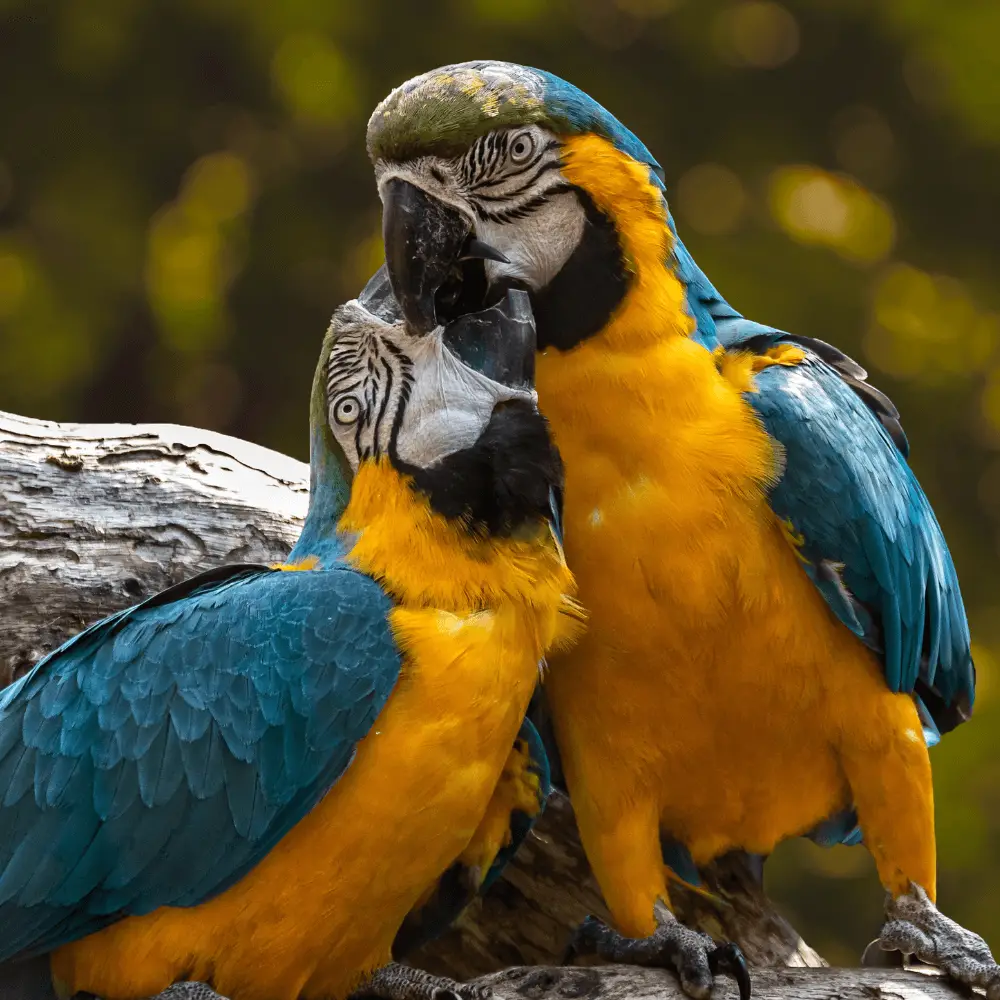
The reproductive instinct and its triggers
Wanting to breed their parrots
Some owners may wish to breed their birds. For whatever reasons (the pleasure of births, the response to the needs of the birds, the profit generated by the sales, etc.), it is essential to meet above all the primary needs of your birds, i.e. to say: an adapted, rich and free environment, a complete and balanced diet, congeners for socio-emotional gregarious needs and adequate care. Once only all these needs have been met (which implies real work on their living environment and their daily life), you can invest in the reproduction of your birds.
However, it is important to think in advance about the fate of future birds. As the market is already saturated with transfers and abandonments, you need to find out about trusted potential adopters who will guarantee the future well-being of the birds. This can seriously slow you down in your reproduction desires. Moreover, the possibility of transferring the broods to pet shops does not ensure that the needs of the birds are respected, most of which are subjected to abuse or psychological mistreatment in these establishments.
Wanting to satisfy the well-being of your parrots, without chicks to manage
Some owners meanwhile take into consideration an ethical reality: too many parakeets and parrots are already for sale (breeders, pet shops, individuals), in second-hand adoption (associations, individuals), or even abandoned or neglected. Thus, they do not wish to reproduce their birds so as not to condone or favor this animal exploitation system and the abuses that are taking place.
Being wild animals with instinctive and particular needs, adapted to life in freedom, captivity often proves to be anxiety-provoking for parrots. This is why we must do our best to meet their needs in order to allow them to flourish.
However, when we optimize the conditions of detention of our parakeets and parrots, we help them to meet their instinctive and natural needs. This includes exploration, research, and socio-affective behaviors, but also sexual behaviors and their consequence: reproduction.
Our birds undergo hormonal surges and instinctive conditioning such that they are brought to regular periods of reproduction, periods which cannot be avoided due to the hormonal surges and the behaviors that this induces: parades, regurgitation, search for a nesting site, mating, brooding, feeding the young and learning. Once these instinctive behaviors are engaged, it is not easy to get our birds to move on to anything other than these reproductive behaviors.
Despite the fact that some of us do not wish to breed our birds and whatever our reasons (the future of given lives, the guarantee of their well-being), we face inevitable problems. We must not inhibit the reproductive behaviors that have free rein in our birds. Do not hesitate to consult our article on the explanation of the need to respect their instinctual needs for reproduction and our solution so that this is done without there being births and nestlings.
Be personally advised on the breeding of your parrots
If you come to our bird welfare information forum for advice on breeding, be sure to read the linked articles on this subject beforehand. This will allow you to be fully documented the essential needs of your birds, before considering any reproduction. You will thus be able to know if the living environment of your birds is adapted to their needs and to take the necessary steps to ensure that it is before you take an interest in breeding.
Then you can create your own post and ask your questions there. Post photographs of the environment of the birds that you want to breed ( tutorial for posting a photo). This is essential so that we can identify the living conditions of your birds so can give you advice adapted to your situation.
Finally, know how to listen and consider the advice given. Our members do not judge you through their information messages, they make recommendations for the well-being of your birds so that you can carry out the breeding of your birds.
Parrots Reproduce
The biological and psychological maturity of the breeding parents
Recommended minimum for breeding parrots:
All you need to know about the Recommended minimum for breeding parrot
Parrots Mating Age
- Budgerigar: 1 year
- Cockatiel: 2 years
- Catherine Parakeet, Celestial Parakeet: 1 year
- Lovebird: 1 year
- Conures: 2 years
- Amazon parrot: 4 years
The environment
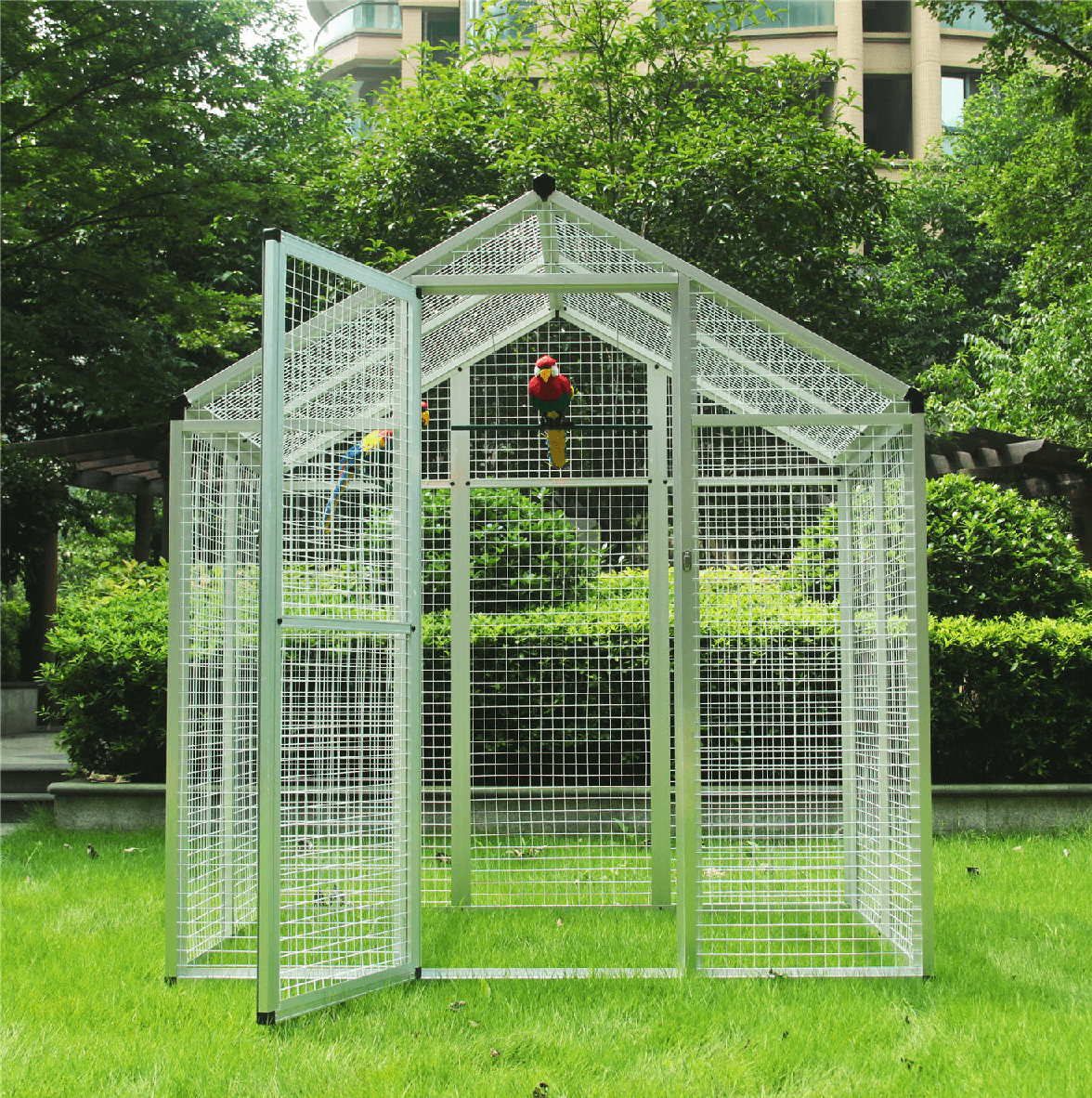
- A spacious breeding cage or aviary, longer and wider than high, allows free movement of the couple and activities. Although it is stimulating and beneficial for breeding pairs in large spaces, breeding in a colony in some species is strongly discouraged because it is too dangerous, especially when starting out. It increases the possible conflicts and risks between females and males who will argue violently, as in Budgerigar. The risk of mortality is much higher there.
- A complete diet is rich in protein and calcium.
- A nest adapted to the species.
- The brightness of a minimum of 10H to 12H per day, and natural or full spectrum.
- Appropriate equipment, and care or emergency accessories if needed.
Reproductive behaviors
The breeding pair must be in top physical condition and must not suffer from pathology. Depending on the species, males on a hormonal rise sing or chirp longer, display (often species-specific), and feed females. The females, for their part, become more destructive, they go after the perches, the toys, then the cuttlebone, and the vitamin blocks to make mineral reserves (calcium).
In budgies, the males adopt an impressive attitude in front of their female, twittering, approaching quickly, and giving slight pecks against the female’s beak, as if to give her a bite and place their paws on her back. The cere of females turns beige to brown and can thicken during the hormonal period. Once the female is ready, she accepts the advances of the male: thus she arches her back, tilts her head, and raises her tail. The male grabs the feathers of its congener and partly surrounds it with its wing. The male rides on the female’s rump.
Reproduction in the Budgerigar: all you need to know in a nutshell
Improving breeding conditions for Budgerigars
Among the Lovebird, the partners turn around while emitting light-clicking sounds. The male scratches his head (the female also but less than the male), then when she is receptive she squats, spreads her wings, and raises her rump: this is the position of the glider.
In the Cockatiels, the male circles around the female, hissing at the top of his voice, the wings slightly apart. The female remains attentive, if she is receptive she squats and raises her rump while emitting light characteristic cries.
In the Amazon, the male recites his repertoire, struts around, spreading his tail, his pupils retracted. Then he feeds the female who accepts the offering if she is receptive. Mating takes place as in Catherine, so the male does not mount the female, but mates by clinging to the perch and raising one leg on her back.
Feeding of breeders

Parrots Reproduce
One month before the start of the brood, it is necessary to start feeding the breeders with a suitable enriched diet. The diet should initially be enriched and complete. In particular, birds should have access to:
- Fortifying mash: make your own home-bred mash
- Whole grains cooked and cooled (contribution of carbohydrates and proteins)
- Sprouts: sprouted seeds have a higher nutritional value
- Green and orange vegetables rich in beta-carotene and other nutrients
Possible food supplements:
- Wheat germ ( rich in calcium, in dietary ray flakes)
- Calcium (cuttlebone, mineral blocks, powdered or liquid calcium, etc.)
- A vitamin supplement (Hagen, Nekton S)
The nest
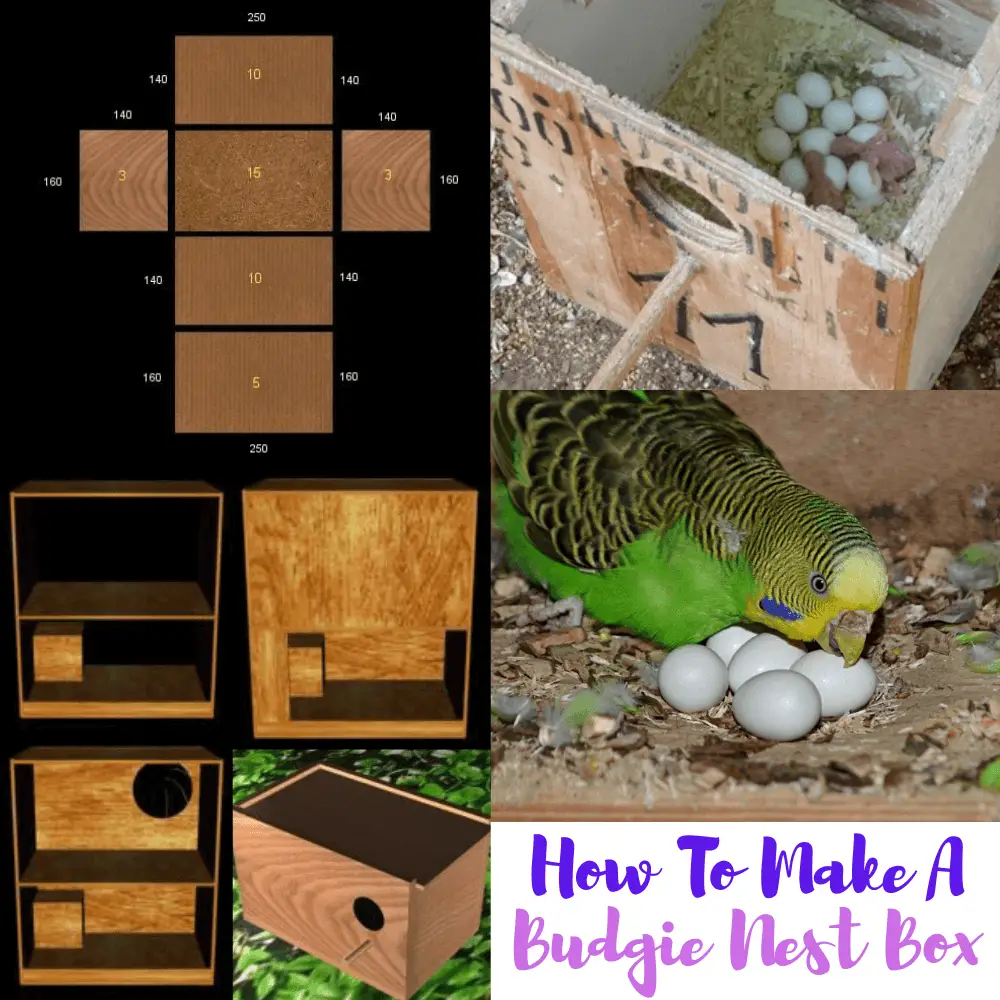
The proposed nest will depend on the species, its size, and its needs (depending on the nesting site in the wild).
- Agapornis 25 cm 18X20 Ø 6 cm
- Small amazons 50 cm 25X30 Ø 9 cm
- Large amazons 60 cm 30X35 Ø 12 cm
- Cockatiels 35 cm 22X25 Ø 7 cm
- Catherine parakeet 25cm 15X18 Ø 5 cm
- Red rump 35 cm 22X25 Ø 7 cm
- Rose-ringed parakeet 50 cm 25X30 Ø 8 cm
- Kakariki 35 cm 22X25 Ø 7 cm
- Omnicolores 45 cm 25X25 Ø 8 cm
- Budgerigar 25 cm 15X15 Ø 5 cm
- Senegal parrot 45 cm 25X28 Ø 7 cm
Cleaning the nest:
We clean only when the young are born so as to not disturb the female.
The nest is cleaned every 2 or 3 days and according to needs. It is necessary to be vigilant because the small ones that leave the nest cool very quickly; interventions must be quick and effective. To make the task of cleaning easier, get two identical nests that you can quickly replace or a nest bottom that can be replaced as needed.
Secret To Breed Parrots – Expert Advice
SOURCE: Think About





















